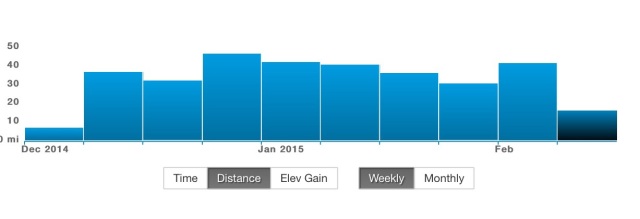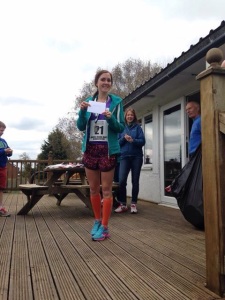…Okay, well the running will be but the planning shouldn’t be!
With just over three months to go until M-day (marathon day!) I am a little over a month into training for my second marathon. As are SO many others! My club is full of them, my Twitter feed, the streets around my house. Marathon fever has well and truly hit! And, if they’re anything like me, it’s all they bloody talk about too.

Unfortunately for those poor souls, there are still a good 2-4 months of this to go before peak Spring marathon season is over. And if you are one of those people, you might want to Sri reading about now ;-).
I ran my first marathon last year in Edinburgh and I was lucky enough to come in under 3:45 and secure myself a place in this year’s London marathon. Since then, I have also become an active member of a running club, and improved my shorter distance times greatly, even getting the odd podium in smaller races. I have decided to run for Mind Charity, see why here. Add this all together with my own high expectations, a full time job, part time Masters degree and the pressure is on!
I’ve come to believe that the logistics around marathon training needn’t be stressful – So, second time round and with all this pressure, how am I approaching London Marathon training?
The plan
I’ve lost count of the number of times I’ve been asked ‘what plan are you following?’ One of Higdon’s many? Asics? London Marathon’s own? Honestly, I have not subscribed to any one plan, for three reasons:
- I got put off by any plans that talked in minutes rather than miles, had over complicated speed sessions (e.g. 4 min 65% MP, 3 min 75% MP, 2 min 5k-15%, 1 min WYH (with your hands) – okay, I am exaggerating but any plan that needs me to have the mental arithmetic of a Maths PhD is an immediate turn off!), heart rate training etc. I like my plans simple! Running is not supposed to be difficult)
- I like racing. The typical marathon training plan usually allows for one or two half marathons but not a lot more. That will not satisfy my competitive juices. Off the top of my head, I am signed up for at least one 5k, 10k, and two 20 mile races, with my eye on one or two others….
- Flexibiltiy. This is key. I see so many runners stressing over missing a session or working in a weekend away and beating themselves up when they have an injury. Perhaps this is more about how you treat a marathon plan, they should be for guidance not gospel.
As someone who runs distance (up to 14 miles) regularly, my plan, loosely goes something like this:
Mon: rest/x-train/recovery run (depending how I feel after the Sunday run)
Tues: Hill session at club, e.g. 3 x 10min loop –
Weds: medium steady run, starting at 5 miles and increasing every few weeks to 9 miles.
Thurs: speed session at club, e.g. 4 x 1 mile repeats; 10 x 400m repeats. On real paths, no tracks!
Fri: as Monday.
Sat: Changeable, maybe parkrun, maybe a 3 mile or 5 mile tempo, maybe rest if a heavy race the next day.
Sun: long run or race. At the moment I am up to 16 miles. This week I have a 12 mile trail race, then a 5k, then 10k, then back in with a ~18 miler. I am planning on doing two 20s (both races) and 22 on Easter weekend. Pace wise, I am still experimenting, but I sm aiming for somewhere between steady and race pace.
Mileage matters
The other thing I am keeping my eye on is weekly mileage. I know some runners who are more particular on this – they have heavy volume weeks interspersed with lighter volume weeks. A good way to keep a track of this is using an app such as Strava. No adding up required to see how your mileage has been trending!

Pop along to Strava.com to see how it might work for you. I recently joined after learning you can upload your Garmin and other GPS watch data, so you don’t have to lug your phone on speed sessions or worry about draining its juice on long runs.
Keeping it simple (And interesting!)
Marathon training is tricky enough without wrapping yourself up in numbers and slavishly following training plans. A few other tips I have gleaned/learned so far to help things along:
– Run your long runs with other people. For one thing, setting a date and time means you. will turn up, for another, the miles roll by more easily when chatting and, finally, if you pick the right people to run with you can keep your pacing under control or push yourself a little harder.
– Rotate your shoes. I have three pairs, all slightly different and I have just settled on which I want to run in for the marathon (I will re-buy the same pair in a few weeks). Read this Runner’s World article for the reasoning.
– Book in a couple of races of different distances/types. Motivation can wane night after night of mile after mile on the road. Some other races dotted in shakes things up, gives some mini-milestones and keeps the ‘art of racing’ fresh (getting used to race day nervy belly etc).
– Go off road and up hills (both at the same time too!). Firstly, this will help with the motivation thing, secondly it’s awesome for leg strength and thirdly your joints and core will thank you for it.
– If something does hurt, don’t ignore it. A week off resting will do far less damage to your plan than continuing to run.
– Set some mini goals for motivation – Races, a run before or to work, master a negative split, a fundraising target, etc.
and remember….

And finally, try not to bore your friends and family too much. Get online where there are loads of interested runners happy to offer tips and advice. I for one will never tire of talking marathon/running/etc, so send me a message or follow me on Twitter 😄. Disclaimer: I am no coach or qualified running anything. This is stuff that works for me and might or might not work for you. Happy running!
*****I am running the Virgin Money London a Marathon 2015 for Mind Charity. Read my story here and please support me with a donation here, for all the fantastic work they do. Running and mental well being are a perfect pairing****








